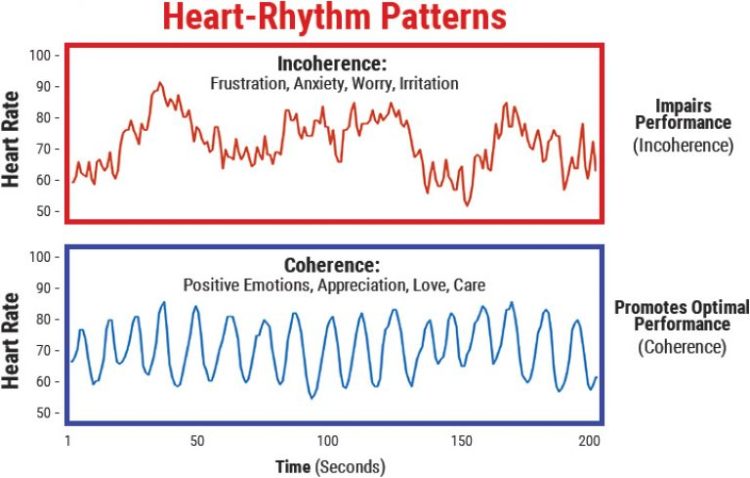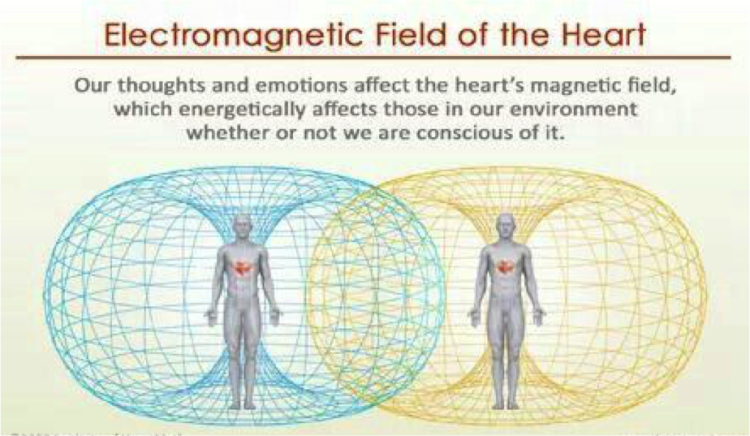In this article you find 10 Ways To Build your Resilience. Building resilience in a crazy and utterly fast paced world is a critical factor in attaining succes and high performance in your work and life. But what exactly is resilience and how to build and boost it?
Resilience is the capacity to prepare for, recover from and adapt in the face of stress, challenge or adversity. Whether it be those tens of e-mails to be answered after a day off, the promotion that is given to your collegue and not to you, the traffic to your work, targets to be reached, etc., without strong resilience you will be less equipped with a good ‘ability’ to ‘respond’ properly to the situation at hand in other words to take responsibility.
You can learn to build resilience step by step and it is a fun thing to do and the process will go with ups and downs and with trial and error to find out what solutions really fit you. But how rewarding when you start to really feel more resilient and thereby getting more results at work and in life in general.
Read and digest the following 10 Ways to Build Resilience and challenge yourself to apply them the coming month and then reflect on your resilience results, I think you will be amazed with the progress you made!
1.The Power of Goalsetting.
People with clear goals tend to be more resilient than people without goals. Why is that?
- Goals gives you a clear direction, you know where you are heading to
- Goals give you a focus
- Goals give you motivation (intrinsic/extrinsic)
- Goals give you a challenge
- Goals give you energy
Are your goals clear for you? Reflect on your goals. Do you have to fine tune them, change them, upgrade them?
 2. Heart Focused Breathing
2. Heart Focused Breathing
Are we Human ‘Doings’ or Human ‘Beings’? If you were alien to this planet and landed here in one of the industrialised countries you would certainly say: ‘I see Human ‘Doings’. They are constantly doing things and they rarely seem to really enjoy the present moment’.
But fortunately we are still Human ‘Beings’. In your essence you ARE already ok. You don’t have to DO anything for that. It is very healthy to balance your ‘doing’ with conscious moments of ‘being’. That’s exactly the reason why the name of my company is ‘Being in Business’.
In the ‘doing mode’ your sympathetic branche of the autonomic nervous system is activated, your ‘accelerator’. And when you relax, your ‘being’ mode, your parasympathetic branche of the autonomic nervous system is activated. Those two branches always work together but when you are stressed this cooperation becomes unbalanced.
What is stress? Stress is experiencing unpleasant feelings like irritation, frustration, anger, anxiety, haste, boredom, depression, despair etc. Under stress your heart rhythm becomes very ‘incoherent’ or unbalanced.

You can neutralise stress by a technique called ‘heart focused breathing’ which will bring you back to the present moment, to ‘being’. ‘Present’ literally means … ‘gift’. Enjoy what is inside and around you, becoming still, awake and aware and make your heart rhythm coherent again as illustrated in the figure above. When your heart rhythm is back in coherence your inner batteries get refueled. It is like pulling back an arrow 20 cm to propel it 300 meters ahead. You can measure the effect on your heart rhythm of the following breathing technique with this award winning technology.
The Heart Focused Breathing technique:
Focus your attention in the area of the heart. Imagine your breath is flowing in and out of your heart or chest area, breathing a little slower and deeper than usual.
Suggestion: Inhale 5 seconds, exhale 5 seconds. With the inhale you charge yourself with fresh energy and with the exhale you let go of tension and negativity.
This Heart Focused Breathing technique will bring your autonomic nervous system in a coherent state which is seen by cardiologists as the optimal state for learning and performance, bringing you back to flow.
I am training these scientifically and evidence-based techniques in big companies for about 15 years now and the average measured stress reduction (with validated questionnaires) is 40%. Examples of companies applying these techniques for their employees are Unilever, Shell, Philips, Police, ABN AMRO Bank, Achmea, BP, Boeing, Microsoft and many more.
In that resilience training we make us of one of the leading apps to measure the effects of heart focused breathing using biofeedback with a bluetooth sensor which communicates with your mobile phone. In this way you can practise heart coherence and regulate your stress and enhancing your resilience before a presentation, before an important meeting, after a conflict with somebody, before writing a proposal etc.
You can see this heart focused breathing as a ‘micro meditation’ of 30 seconds to 2 minutes and it has proven itself to improve resilience for thousands of professionals in organisations worldwide.
3. Exercise
The healthy effect of exercise on the brain to boost your resilience is underestimated. Of course exercise is good for the heart and to build muscle mass and insulin receptivity. But exercise is especially a brain booster for focus, learning, performing, concentration and feeling positive. Exercise is also a proven depression killer for moderate depressions.
In the pharmaceutical world there is a saying that their ‘dream pill’ would be the one with the same effects on the brain than 2o minutes of exercise whether this would be hiking, running, training on a cross trainer or anything else. But they are not able to produce it, we can only get this ‘pill’ by DOING the exercise!
Assignment: Exercise 3 times this week for at least 20 minutes and notice the effect on your work performance, study, focus, creativity, productivity and of course…resilience!
4. Activate Positive Feelings
A new Gallup World Poll representing 95% of the world’s population
from 140 countries found that:
- Positive emotions were a reliable predictor of better health
— even for those without food or shelter. - Negative emotions were a reliable predictor of worse health
— even when basic needs like food, shelter
and safety were met.
The research suggests that “positive emotions are critical
for upkeep of health for people worldwide.”
About 70-90% of diseases have a direct relation with stress (= experiencing negative feelings and emotions). So for your resilience it is an absolute vital factor that you learn to activate positive feelings and breathe them through your heart area to get your heart rhythm back in coherence (see point 3 ‘Heart Focused Breathing’). You can do this with the following technique:
Quick Coherence technique:
Step 1: Do the Heart Focused Breathing as explained in point 3:
Focus your attention in the area of the heart. Imagine your breath is flowing in and out of your heart or chest area, breathing a little slower and deeper than usual.
Suggestion: Inhale 5 seconds, exhale 5 seconds. With the inhale you charge yourself with fresh energy and with the exhale you let go of tension and negativity.
Step 2: Activate a positive feeling:
Make a sincere attempt to experience a positive and regenerative feeling such as appreciation, gratefulness or care for someone or something in your life and breathe this feeling in and out your heart area a little slower and deeper than usual.
Suggestion: Try to re-experience the feeling you have for someone you love, a pet, a special place, an accomplishment, etc., or focus on a feeling of calm or ease.
Tip: Use this app to see direct proof of your effort! You will see your heart rhythm become coherent and you will enter the green zone of optimal performance and resilience. Your whole system is resetting now on the physical, emotional, mental and spiritual level.
Science has proven that your heart has an electromagnetic field around it that is 5000 x stronger than the electromagnetic field of the brain and this radiates, measurably, several feet outside the body sending positive vibes to your surroundings.

5. Cold shower in the morning
Most people take a cup of coffee in the morning to wake-up. Nothing wrong with that and it certainly helps to get your brain in the active mode for the challenges of the coming day. But few know that the champion of all ‘cups of coffee’ to wake up and boost your resilience for the day is… taking a cold shower!
- The University of Virginia found in extensive research that taking a cold shower stimulates a part of the brain that is responsible for feeling happy, free of depression.
- The cold water also stimulates your immune system because of the initial stress experience of the cold water hitting your body.
- The bloodcirculaton in your body and in your brain improves, providing the brain with extra oxygen and nutriion contributing to a heightened mental resilience.
- Under the cold water you will automatically start to breathe very deeply causing even more oxygen flooding your brain and body.
Every morning when I wake up I take a cold shower. Personally I like the ‘sauna effect’ where you start with warm water and then you end with a minimum of 2 minutes of cold water. I bet you have never been so wide awake in the morning. And now you have deserved that freshly brewed espresso…
6. Visualisation
“Whatever the mind can conceive and believe, it can achieve.” This quote from Napoleon Hill explains in a nutshell what visualisation is. When you visualise something, let’s say a successful presentation for a critical audience, your mind has already ‘been there’: neural circuits in the brain have been activated so you would find it easier and more relaxing to deliver the actual presentation. You have already ‘preframed’ it in your brain.
How does visualisation work?
- Our brain reacts the same on imagination than on ‘reality’
- Muscles are controlled by the brain
- For each movement there is a ‘scheme’ in the brain, a pathway
- When necessary this scheme will be executed
- Visualisation creates new neural pathways or refines and deepens and strengthens existing ones
- In fact you can visualise everything and it will further grow your resilience. But pay attention that your visualisation is positive. Focus on what you want, not on what you don’t want.
7. Earthing
We humans are electrical creatures on an electrical planet, and the ground beneath us provides us abundantly with ant-oxidants (free electrons) when we walk on it with bare feet. That’s why we like walking on the beach in the summer so much.
We are the only species on the planet that walk on shoes and in this way we have lost contact with Mother Earth. Science has now found that this is one of the reasons that we suffer chronic pain, fatigue and bad sleep. And it is growing because of the enormous growth of electrosmog around us (mobile phone, wifi, smart meters, etc.). When you touch the earth with your skin you instantly discharge this electrical tension and you take an abundant amount of free electrons from the earth and strongly reduce inflammation in your body. You can use a volt meter to convince yourself to this direct effect. When you have earthed for a few minutes your mind becomes more clear and you, literally, feel more grounded.
Every morning I sit for 10 minutes in my garden with bare feet just breathing & being. And its for free! The only time I am not earthing is when it is freezing outside.
Some say the re-discovery of earthing might be the most important health discovery ever.
So what are you waiting for? Take of your shoes and start earthing!
8. Go Vegan
Manage your Mind, Mind your food!
I was a vegetarian for about 20 years when somebody confronted me with some thorough scientific studies that indicated that, in relation to the 10 major diseases that can lead to death (like diabetes, heart failure, cancer, etc.), being a vegetarian on the one hand indeed is a lot healthier than eating meet but that on the other hand eating vegan is way healthier. So I started my own research and indeed after a while I also became convinced that eating vegan makes you even healthier. And you also contribute to a healthy earth by diminishing your eco footprint.
Especially ‘The China Study’ from Prof. T. Campbell struck me most. The China Study is perceived as ’the most comprehensive study on nutrition ever conducted’. During this massive study the scientists could ‘switch cancer off and on’ by varying the intake of animal protein. The researchers found that the less animal protein intake, the less the chance to develop cancer.
If you dare I recommend reading it. But, especially when you still eat meet, fish and dairy, it is quite confronting, so you are warned (as I was when I was stil taking in a lot of animal protein).
The bizarre thing is that Prof. T. Campbell was raised on a dairy farm with the belief that milk, cheese etc. are healthy for you. When the first huge amounts of results from the study came in he literally couldn’t/wouldn’t see it because the outcomes totally challenged his beliefs. Finally his scientific mind beated his existing beliefs and he changed his diet to fully vegan.
Proper nutrition feeds your doing, your feeling, your thinking and your being. Eating vegan (preferably Whole Food Plant Based) does this in a superior way. It is guilt free and cruelty free eating and empowers you to experience a feeling of oneness and connectedness with everything. You need less sleep, you will have more energy, you will be ill less often and your mental and spiritual capabilities go through the roof.
Some famous vegans are Brooke Shields, Brad Pitt, Anne Hathaway, Richard Gere, Mahatma Gandhi, Buddha, Confucius, Socrates, Plato, Carl Lewis, Bruce Lee…
‘As long there are slaughterhouses, there will be battlefields’
Leo Tolstoy
‘Who is cruel towards animals can’t be a good human being’
Arthur Schopenhauer
Take the Vegan Challenge and eat vegan for the coming two months!
9. Strong Self-Talk 
An average person thinks about 60.000-80.000 thoughts a day which has been measured with EEG (electroencefalogram). About 70%-80% of these thoughts are negative thoughts. In other words: not helping thoughts, or in terms of sports psychology: ‘weak self-talk’.
Especially fearful thoughts are thought most because these are triggered by the amygdala in the brain that is constantly scanning the environment for danger. But you can learn to bypass the amygdala and keep your neocortex in check by replacing the ‘weak self-talk’ with ‘strong self-talk’, with positive thoughts.
How do you know you are thinking negative? Because you experience a negative feeling! Are you angry? You are thinking an angry thought. Are you depressed? You are thinking a depressive thought. Are you irritated? You are thinking an irritated thought, and so on.
How to change it to positive thoughts, to strong self-talk? First notice your feelings and thoughts. Become mindful. Then accept what is, ‘ease’ in the feeling. And then ask yourself: what positive thought could help me right now to feel better? Think a grateful thought and you will feel grateful (think of your favourite hobby, your last holiday, a good friend etc.). Think a fun thought and you will experience fun. Think a self confident thought and you will feel confident.
Make this day your ‘strong self-talk’ day!
10. Learn to say ‘no’
Everytime you say ‘yes’ to something you say ‘no’ to something else!

So be careful when you say ‘yes’ when somebody asks you for something. Saying yes certainly benefits you but sometimes it can cost you (too) much as well. You can spend your time during a day only once. The more and easy you say yes, the more people will ask you something and the less time you have for other things that you really want.
Being resilient means also that you are able to say ‘no’. When you successfully learn to do that then finally you can go for that nice and good earning project instead of that badly paid assignment with that energy draining client. Finally you can go to the gym instead of working overtime. Or you can start that new project rightaway instead of first having to attend that boring meeting.
Saying ‘yes’ when you really feel ‘no’ is also bad for your self-respect because actually you are saying that the other is more important then yourself.
Hard to say ‘no’? 4 tips:
- Learn how excellent ‘no’ sayers do that. In what way did they say ‘no’? What was your feeling about it? Did you immediately dislike them or did you may be respect them for their honesty and strength?
- Realise that when you say ‘no’ you generally don’t mean it personally. Stay friendly but self assured, say no when you really feel to say no.
- Practise with saying ‘no’. Start small. Can we have lunch outdoor tomorrow? ‘No, I am sorry I have to prepare a presentation.’
- Wait a moment before you say ‘yes’. Sometimes you have already said it before you even realise. First ask yourself: ‘do I really want this? What does it cost me and what do I gain with it?’ If time is to short to oversee the consequences then buy some reflection time. And after that you are still allowed to say no!
Saying ‘no’ when you really feel it like makes your heart rhythm become coherent and balanced (see points 4 and 6) and if you like you can measure it with this resilience building app.
Practise this week with saying ‘no’!
What are your personal resilience building tips?
Of course this list with ’10 Ways to Build Resilience’ is far from complete… There are many more ways to build resilience.
I am very excited to hear about your personal ‘golden tips’ for building resilience. If you have some and/or if you have questions, please leave a comment below!
